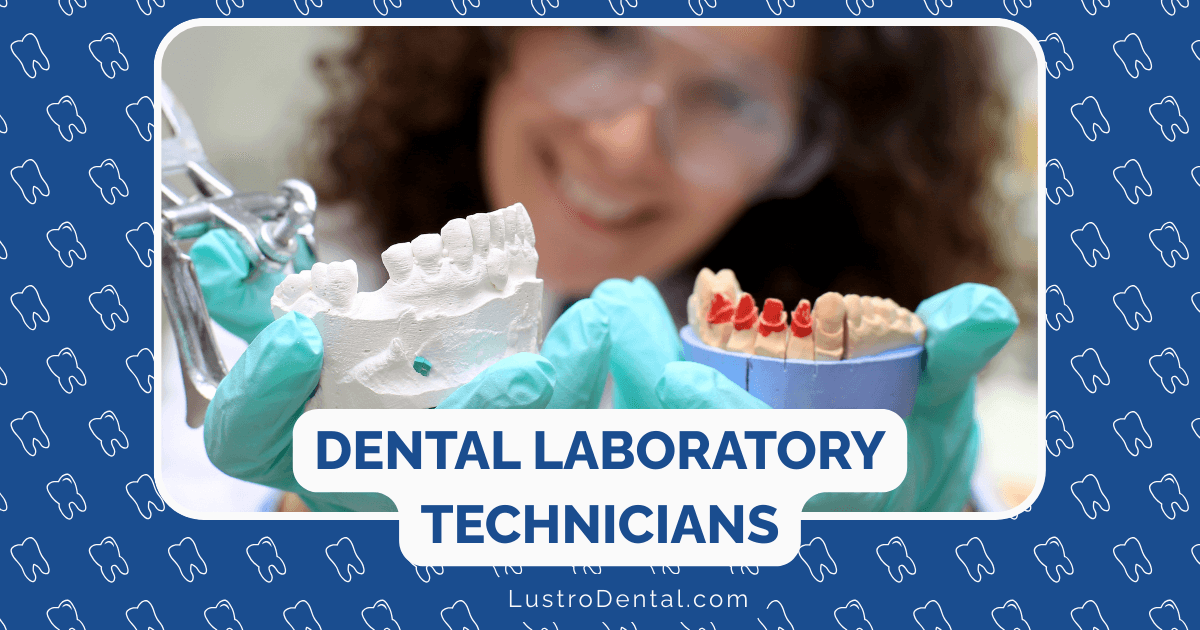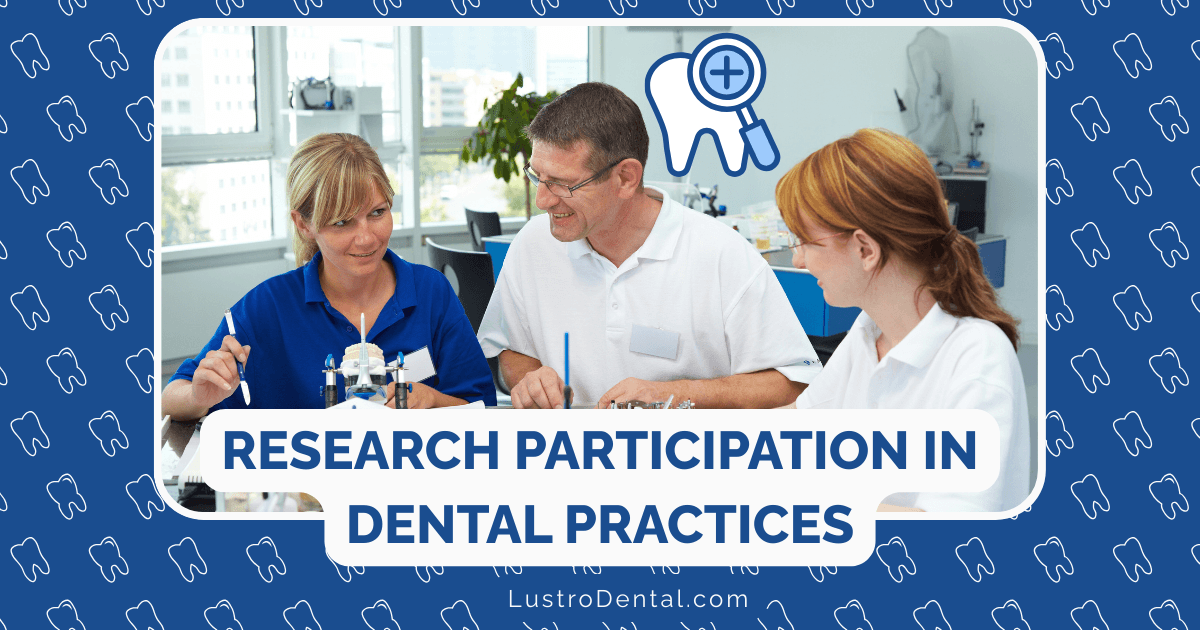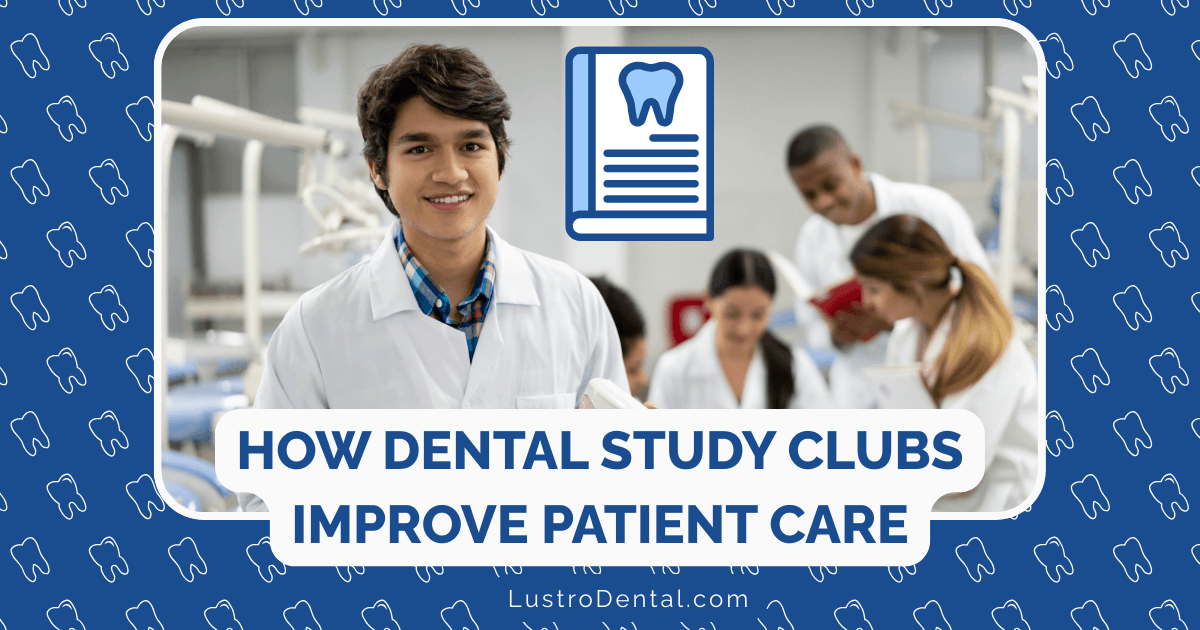The Dental Lab Technician: The Unseen Artist Behind Your Restorations

When you admire your new crown in the mirror or feel the comfortable fit of your dental bridge, you’re experiencing the culmination of not just your dentist’s work, but also the artistic craftsmanship of a professional you likely never meet: the dental laboratory technician. These skilled artisans blend science, technology, and artistic talent to create the dental restorations that restore both function and beauty to your smile.
While dentists rightfully receive recognition for their clinical expertise, dental lab technicians remain the unsung heroes of restorative dentistry—creating custom prosthetics that transform dental health and confidence with meticulous attention to detail and aesthetic sensibility. This comprehensive exploration reveals the fascinating world of dental laboratory technicians and the crucial role they play in your dental care.
The Dental Laboratory: Where Art Meets Science
Dental laboratories serve as specialized workshops where technicians transform dental impressions and digital scans into functional, aesthetically pleasing restorations. According to the National Association of Dental Laboratories, these facilities combine elements of traditional craftsmanship with cutting-edge technology to create everything from crowns and bridges to dentures and orthodontic appliances.
The Unique Blend of Skills
What makes dental laboratory technology particularly fascinating is its position at the intersection of multiple disciplines:
- Artistic creativity: Sculpting, color matching, and aesthetic design
- Scientific knowledge: Understanding dental anatomy and material properties
- Technical precision: Working with measurements often smaller than a millimeter
- Digital expertise: Utilizing advanced CAD/CAM systems and 3D printing
Dr. Michael Chen, a prosthodontist who works closely with dental laboratories, explains: “Dental technicians are truly artists with a profound understanding of both form and function. They must create restorations that not only look natural but also function properly within the complex biomechanics of the oral environment.”
The Craftspeople Behind Your Restorations
Dental laboratory technicians typically work behind the scenes, but their expertise significantly impacts the success of your dental treatment.
Educational Background and Training
According to Explore Health Careers, dental laboratory technicians develop their skills through:
- Formal education: Associate degree programs in dental laboratory technology
- On-the-job training: Apprenticeship-style learning under experienced technicians
- Continuing education: Ongoing learning to stay current with evolving techniques and materials
- Specialization training: Focused expertise in specific types of restorations
While not all states require formal certification, many technicians pursue voluntary certification through the National Board for Certification in Dental Laboratory Technology, which offers credentials in six specialty areas: crown and bridge, ceramics, complete dentures, partial dentures, orthodontics, and implants.
Specializations Within the Field
Just as dentistry has various specialties, dental laboratory technicians often specialize in specific types of restorations:
- Crown and Bridge Technicians: Create fixed prosthetics that replace missing teeth or cover damaged ones
- Ceramists: Specialize in the aesthetic aspects of porcelain restorations
- Denture Technicians: Craft complete or partial removable dentures
- Orthodontic Technicians: Fabricate appliances that help align teeth
- Implant Specialists: Design and create implant-supported restorations
- CAD/CAM Specialists: Focus on digital design and manufacturing techniques
This specialization allows technicians to develop exceptional skill in their particular area, resulting in higher quality restorations for patients.
The Artistic Process: From Impression to Insertion
The journey of creating a dental restoration involves multiple steps, each requiring precision and artistic judgment.
Step 1: Receiving the Case
The process begins when your dentist sends the laboratory:
- Detailed impressions or digital scans of your teeth
- Shade information for color matching
- Specific instructions about the desired restoration
- Relevant patient information that might affect design choices
“The quality of the information we receive from the dentist is crucial,” notes Sarah Johnson, a master ceramist with over 20 years of experience. “Clear communication about the patient’s needs, expectations, and unique oral characteristics helps us create truly customized restorations.”
Step 2: Creating the Foundation
Depending on the type of restoration, the technician begins by:
- Pouring dental stone into impressions to create precise models
- Scanning physical impressions to create digital models
- Designing the underlying structure of the restoration
For crowns and bridges, this often involves creating a substructure—traditionally made of metal but increasingly crafted from high-strength ceramics like zirconia—that provides the necessary strength while supporting the aesthetic outer layers.
Step 3: Applying Artistic Elements
This is where the true artistry emerges, as technicians:
- Layer different shades of porcelain to mimic the natural translucency of teeth
- Hand-sculpt anatomical details like cusps, ridges, and grooves
- Create surface textures that match adjacent natural teeth
- Incorporate subtle color variations and characterizations
“Creating natural-looking restorations isn’t about making perfect teeth,” explains James Wilson, a dental ceramist. “It’s about understanding how natural teeth look—with all their subtle imperfections and individualized characteristics—and recreating that in the restoration.”
Step 4: Finishing and Quality Control
Before a restoration leaves the laboratory, technicians meticulously:
- Check the fit on the model
- Verify occlusal (bite) relationships
- Polish and finish surfaces
- Conduct final aesthetic evaluations
- Document their work for future reference
Many laboratories now include photographs of the finished restoration alongside natural teeth to help dentists with shade verification and placement.
The Evolution of Technology: Traditional Artistry Meets Digital Innovation
The field of dental laboratory technology has experienced significant transformation with the advent of digital technologies, creating an interesting blend of traditional craftsmanship and cutting-edge innovation.
Digital Design and Manufacturing
According to Dental Lab Network, modern dental laboratories increasingly utilize:
- CAD (Computer-Aided Design): Software that allows technicians to design restorations digitally
- CAM (Computer-Aided Manufacturing): Automated milling or 3D printing systems that fabricate restorations
- Digital Scanners: Tools that create precise digital models from physical impressions
- 3D Printers: Equipment that builds restorations layer by layer from digital designs
These technologies enhance precision and efficiency while reducing the time required to create restorations.
The Continued Importance of Hand Skills
Despite technological advances, the human touch remains essential. Dr. Lisa Martinez, a cosmetic dentist, observes: “The most beautiful restorations I’ve seen come from laboratories that effectively combine digital precision with traditional artistic techniques. Technology provides accuracy, but the artistic eye of the technician brings life to the restoration.”
Many laboratories now employ a hybrid approach where:
- Digital technology handles the precise structural elements
- Hand layering and customization create the aesthetic elements
- Artistic finishing touches are applied manually
- Human judgment evaluates the final result
This combination maximizes both precision and aesthetic outcomes.
The Impact on Patient Satisfaction: When Artistry Meets Function
The skill of dental laboratory technicians directly affects patient satisfaction in several key ways:
Aesthetic Success
According to a 2025 issue of Dental Technology Today, the aesthetic quality of dental restorations significantly impacts patient satisfaction. Technicians contribute to this through:
- Natural appearance: Creating restorations that blend seamlessly with natural teeth
- Personalization: Customizing restorations to match a patient’s facial features and existing dentition
- Age-appropriate characteristics: Incorporating subtle details that match the patient’s age and dental history
When patients can’t tell which tooth is the restoration, the technician has achieved aesthetic success.
Functional Comfort
Beyond appearance, technicians ensure that restorations:
- Fit precisely: Eliminating gaps that could trap food or bacteria
- Support proper occlusion: Allowing comfortable and efficient chewing
- Maintain speech patterns: Preserving normal pronunciation and phonetics
- Feel natural: Creating contours that feel comfortable to the tongue and lips
“A truly successful restoration should disappear in the patient’s awareness,” notes Robert Thompson, CDT. “When patients forget they have a crown or bridge because it feels so natural, we’ve done our job well.”
Longevity and Durability
The technical expertise of laboratory technicians affects how long restorations last through:
- Material selection: Choosing appropriate materials for each clinical situation
- Structural design: Engineering restorations to withstand bite forces
- Precision margins: Creating accurate fits that prevent recurrent decay
- Surface finishing: Polishing surfaces to minimize wear and staining
These factors can significantly extend the lifespan of dental restorations, providing better long-term value for patients.
The Collaborative Relationship: Dentist and Technician
The best dental restorations emerge from strong collaborative relationships between dentists and laboratory technicians.
Communication Is Key
Effective collaboration includes:
- Detailed prescriptions: Clear instructions about the desired outcome
- Photographic documentation: Images that communicate shade, texture, and alignment
- Direct consultation: Phone calls or video conferences for complex cases
- Feedback loops: Constructive communication about completed work
“I consider my laboratory technician a true partner in patient care,” says Dr. James Wilson, a restorative dentist. “The cases where we collaborate closely—sharing photos, discussing options, and problem-solving together—invariably yield the best results for patients.”
The Value of In-Person Collaboration
While many dentists work with laboratories remotely, there are special benefits when technicians can:
- Meet patients in person for custom shade matching
- Observe the patient’s smile dynamics and facial characteristics
- Discuss expectations directly with the patient
- See the oral environment firsthand
These interactions, though not always possible, can enhance the personalization of restorations.
The Future of Dental Laboratory Technology
The field continues to evolve rapidly, with several emerging trends shaping its future:
Advanced Materials
According to the U.S. Bureau of Labor Statistics, dental technicians increasingly work with:
- High-strength ceramics: Materials like zirconia that combine strength and aesthetics
- Hybrid materials: Combinations of ceramics and polymers with improved properties
- Biocompatible options: Materials designed for patients with sensitivities
- Smart materials: Restorative materials with adaptive or responsive properties
These materials expand the possibilities for creating restorations that are both beautiful and durable.
Digital Workflow Integration
The digital revolution continues with:
- Intraoral scanning: Direct digital impressions sent immediately to laboratories
- Cloud-based collaboration: Platforms that facilitate dentist-technician communication
- Artificial intelligence: Tools that assist with design suggestions and quality control
- Virtual reality: Technologies that allow for immersive design experiences
These advancements streamline the restoration process while potentially improving outcomes.
Personalized Medicine Approaches
The future points toward increasingly individualized restorations based on:
- Genetic profiles: Understanding how genetic factors affect oral health
- Functional analysis: Detailed study of a patient’s unique chewing patterns
- Aging considerations: Designing restorations that will look appropriate as patients age
- Biomechanical modeling: Creating restorations optimized for each patient’s bite forces
This personalization promises restorations that function more naturally throughout a patient’s lifetime.
Challenges Facing the Profession
Despite its importance, the dental laboratory profession faces several challenges:
Workforce Development
According to DentalPost, the industry faces:
- Aging workforce: Many experienced technicians approaching retirement
- Training pipeline concerns: Fewer formal educational programs
- Knowledge transfer challenges: Preserving traditional skills in a digital age
- Recruitment competition: Attracting new talent to the profession
These factors create both challenges and opportunities for those entering the field.
Balancing Technology and Artistry
Modern laboratories must navigate:
- Investment decisions: Determining which technologies provide the best return
- Skill preservation: Maintaining traditional artistic skills alongside digital expertise
- Training requirements: Keeping staff current with rapidly evolving technologies
- Quality control: Ensuring that efficiency doesn’t compromise artistic quality
The most successful laboratories find ways to leverage technology while preserving the artistic elements that make restorations truly exceptional.
Global Competition
The industry increasingly faces:
- Offshore competition: Laboratories in other countries offering lower prices
- Standardization pressures: Balancing efficiency with customization
- Material sourcing challenges: Ensuring quality across global supply chains
- Regulatory variations: Navigating different standards across jurisdictions
These pressures require laboratories to clearly articulate their value proposition, particularly regarding quality and personalized service.
Appreciating the Unseen Artists
As a patient, understanding the role of dental laboratory technicians can enhance your appreciation for the restorations in your mouth and inform your dental care decisions.
Questions to Ask Your Dentist
Consider asking:
- Which laboratory do you work with for restorations?
- What is their specialty or reputation in the industry?
- Do they offer custom shade matching for more aesthetic cases?
- What materials do they recommend for my specific situation?
- Can I see examples of their previous work similar to my case?
These questions can help ensure you receive restorations that meet both functional and aesthetic expectations.
Understanding Quality Differences
Just as with any craft, quality varies among laboratories. Higher quality typically involves:
- More personalization: Customization beyond basic specifications
- Superior materials: Using the best materials appropriate for each case
- Advanced techniques: Employing sophisticated methods for natural results
- Attention to detail: Meticulous finishing and quality control
- Collaborative approach: Strong communication with your dentist
While higher quality often comes with higher costs, the difference in longevity and satisfaction can make it a worthwhile investment.
Conclusion: Celebrating the Artistic Science of Dental Restorations
The next time you receive a crown, bridge, or other dental restoration, take a moment to appreciate the unseen artistry that went into its creation. Behind every beautiful, functional restoration is a skilled dental laboratory technician who combined scientific knowledge, technical precision, and artistic talent to create something uniquely suited to your mouth.
As Dr. Emily Johnson, a prosthodontist, reflects: “In many ways, dental laboratory technicians represent the perfect union of artist and scientist—using their hands to craft restorations that must be simultaneously beautiful, functional, and biocompatible. Their work transforms patients’ lives, often without the patients ever knowing who was responsible for the transformation.”
These dedicated professionals, though rarely seen by patients, play an indispensable role in restorative dentistry. Their craftsmanship not only restores oral function but also helps rebuild confidence through natural-looking smiles—truly making them the unsung artists of the dental profession.







